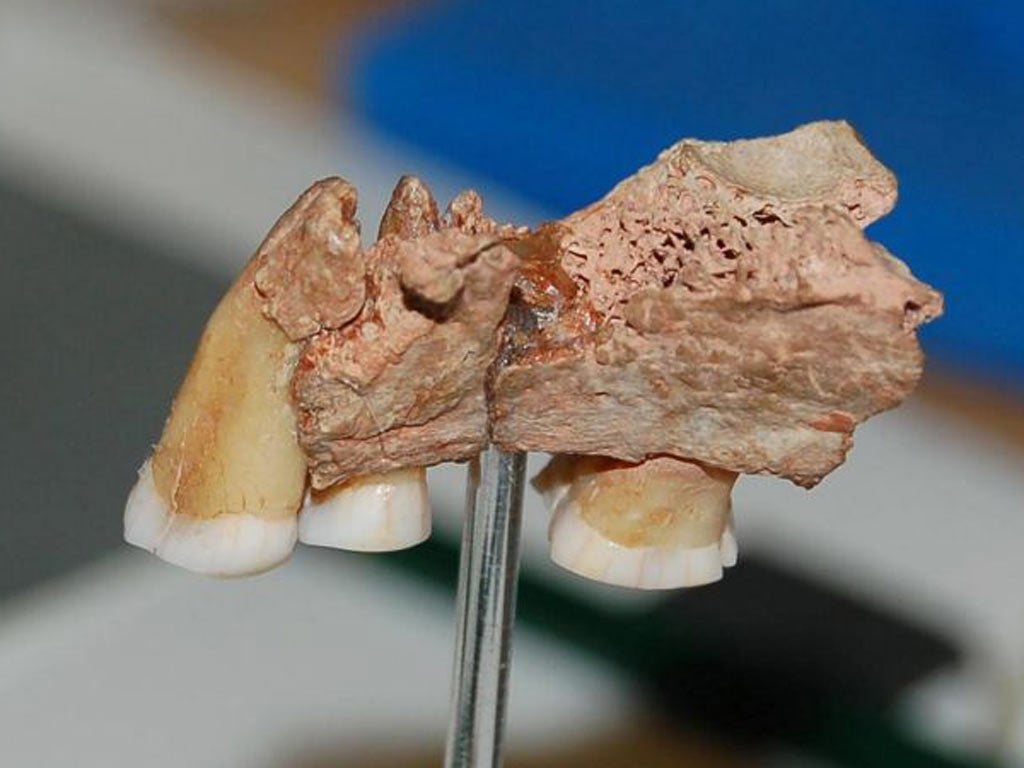
The long scientific dispute over when anatomically modern humans first arrived in Europe on their long trek out of Africa has come close to resolution – with the help of a fragment of jawbone belonging to an elderly person who lived near present-day Torquay.
Radiocarbon tests have shown that the piece of upper jawbone, containing three well-worn molar teeth, is between 41,000 and 44,000 years old. This is at least 7,000 years older than previous thought, suggesting that anatomically modern humans arrived in northwestern Europe while the Neanderthals were still in residence.
The new analysis of the jawbone, unearthed in 1927 from a cave called Kent's Cavern on the Devon coast, coincides with a study on a pair of milk teeth found in a similar stone-age cave site called Grotto del Cavallo in the Italian region of Abruzzo. New tests date these teeth to between 43,000 and 45,000 years old.
The two sets of radiocarbon dates for the jawbone and milk teeth, published in the journal Nature, suggest that anatomically modern humans were widespread in both the north and south of western Europe many thousands of years earlier than previously thought.
The dates also help to resolve another long-running dispute by confirming that modern humans lived alongside the Neanderthals, who had arrived in Europe many tens of thousand of years earlier. This raises intriguing questions about whether there was any cultural or even social interaction between these two species of early Europeans – DNA studies suggest limited interbreeding.
"It changes our picture of Europe 40,000 years ago. Modern humans were there and that was contested up to now," said Professor Chris Stringer of the Natural History Museum in London.
Professor Tom Higham of Oxford University, who was part of the radiocarbon dating team, said that the new evidence from Torquay and Italy shows how quickly people could migrate in the stone age. "These people were mobile hunter-gatherers. They didn't have a permanent base camp. They moved a lot," he said.
Subscribe to Independent Premium to bookmark this article
Want to bookmark your favourite articles and stories to read or reference later? Start your Independent Premium subscription today.

Join our commenting forum
Join thought-provoking conversations, follow other Independent readers and see their replies